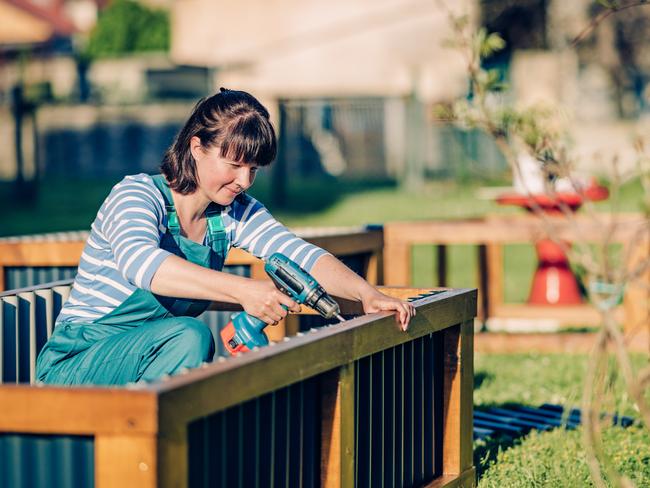Employment experts share how women with side hustles can make more money
The gender pay gap is even bigger in Australia’s gig economy than it is for traditional workers. Find out how women with side hustles can boost their earnings.

Careers
Don't miss out on the headlines from Careers. Followed categories will be added to My News.
The gender pay gap has not only extended to side hustles, but amplified to the point where men are out-earning women by an average of 51 per cent in the gig economy.
This is far higher than the male-female wage divide for traditional employees, which the Workplace Gender Equality Agency puts at 21.8 per cent.
In dollar terms, male side hustlers bring in an average $24,481 a year, compared to women who earn just $16,141, new research from accounting software company Reckon reveals.
Reckon head of people and culture Jessica Morris says the research shows how deeply ingrained the gender pay gap has become, “even in spaces where individuals have more control over their income’’.
“This is particularly unfair because side hustles are often pursued for financial independence, flexibility or to bridge income gaps,’’ Morris says.
“The fact that gender-based pay disparities exist in this space reinforces the need for greater awareness and enforced action to ensure that all workers – whether employed traditionally or self-employed – are compensated fairly for their skills and contributions.’’
RELATED: $30K a month: Australia’s top-earning side hustles

How confidence affects pay
A combination of societal, structural and psychological factors is causing the gender pay gap in side hustles, Morris says.
Women are notably almost three times as likely to experience impostor syndrome as men, subsequently undervaluing their work.
The limited time and funds available to women to pursue side hustles are also factors, Morris says.
“Society expects women to focus on their family first,” she says.
“So limited time to actually sit down and focus on their side hustle further restricts earning potential.”
The fact men are typically more comfortable self-promoting and boasting about their achievements could also play a part, people and behaviour expert Mark Carter says.
He also suspects men would be prone to taking on riskier side hustles, or projects with tight deadlines that often come with more pay.
He encourages women to “be more comfortable with the humble brag’’.
And he urges all side hustlers to learn the going rate for the goods or services they provide and to predetermine – and stick to – their “walkaway point’’, or the minimum price they will accept in a business negotiation.
“I have got negotiation (price) points and I have got a walkaway point and if I’m going to give up (negotiate) pricing then I want certain things back in return,’’ Carter says.
“Every gig has to have a walkaway point because you know if you say yes (to a lower price) you are going to regret it later.’’
Practise assertiveness
Employment expert Roxanne Calder, founder of recruitment firm EST10, agrees that lack of self-confidence plays a significant role in women’s lower side hustle earnings.
She says those struggling to price their goods and services more realistically should consider the accumulative financial losses that come with undervaluing their worth.
“If you’re missing out on $200 for every project, ask yourself what is that going to cost you over the entire year,’’ says Calder, author of Earning Power.
“When you see that bigger picture – it might be $10,000 or $20,000 – consider what you can do with that money.
“Can you afford to give it away to someone else (through undercharging them) or should you keep it for yourself and your family?’’
Calder also recommends women practise talking about their business pricing structure and develop assertive ways of dealing with those who attempt to negotiate costs.
“Once you verbally say it (practise talking about pricing), it becomes easier,’’ she says.
“Someone might say, ‘But it (the time to provide a service) is only an hour and you are charging me a thousand dollars’.
“You could say, ‘Yes, but I have been doing this for 30 years’, or ‘I have two degrees and that one hour you are getting from me is the accumulation of all my knowledge’.
“Practise saying it in front of the mirror too because you would be surprised what your body language is also saying.’’


‘Not good enough’ to charge more
Clinical psychologist Emily Hanlon established her side hustle, The Playful Psychologist, which provides psychology resources for children to parents, educators and fellow clinicians, three years ago.
At the time, she says a feeling of “not being good enough’’ led her to dramatically undervalue the resources she offered.
“Some of my resources on the website were $1, which is insane considering it costs more than $200 to see a clinical psychologist these days,’’ she says.
Hanlon says she has now learned to price newer resources more appropriately, although her earlier products are still available at the original price.
“I’m a little bit nervous to increase those prices because I want people to buy in and I want them to give me an opportunity to show them who I am,’’ she says.
“Additionally, there’s an unspoken bias where clients may unconsciously expect to pay less for services provided by women – particularly in fields like health and allied health, which are often seen as ‘helping’ professions rather than business ventures.’’
Average annual side hustle earnings
All Australians (men and women) – $20,137
Australian men – $24,481
Australian women – $16,141
Source: Reckon
Originally published as Employment experts share how women with side hustles can make more money


